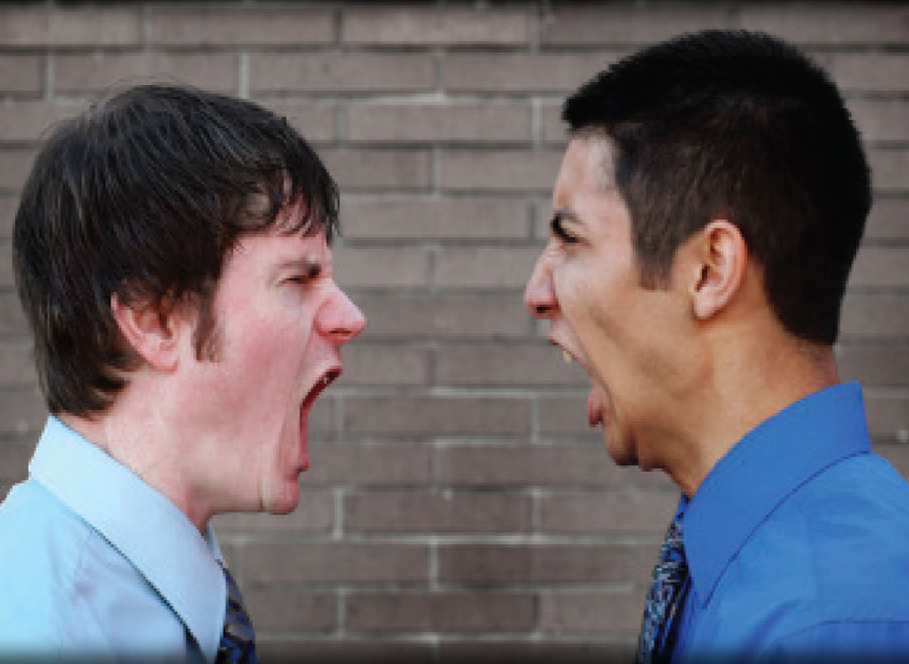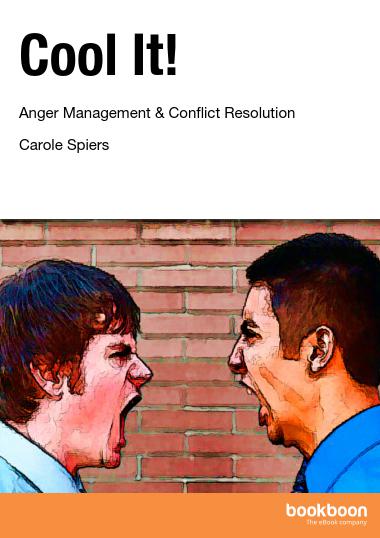Tired of arguments? Learn the essentials of conflict management!

You are probably not always of the same opinion as your colleagues about how things should be done within your company. This is normal and the key to a positive outcome is a well-led discussion. The trouble only starts when a discussion turns into a conflict. Conflict may be viewed as ‘the existence of competing or incompatible options’, and can become highly detrimental or even destructive to a business or organisation if ignored.
However, it is almost inevitable that conflict will be found in most workplaces and it should not necessarily be regarded as negative. It dealt with well, the outcome will most likely be positive. Potential positive effects of conflict resolution include: Improved motivation, better problem solving, enhanced team spirit, more realistic perceptions and progression towards goals.
The emphasis is on taking positive action to deal with the conflict. While deciding the most appropriate way of managing a conflict it helps to be aware of the type of conflict and the stage it has reached. Let’s take a closer look!
Conflict types – Hot and Cold Conflict
Hot Conflict involves erratic or aggressive behaviour, strong words and intense personal confrontation.
Typical characteristics of Hot Conflict
- High ideals and self-esteem present
- Enthusiasm to achieve goals leads to ‘point scoring’
- Poor awareness of motives, e.g. for principles or to teach a lesson
- Hectic activity: many meetings, misinformation and plotting
- Losing of tempers
- Over-sensitivity
Information overload: rumour and gossip abound with little attempt to verify facts
Cold Conflict is much less evident to the observer and involves a cold and withdrawn atmosphere with the parties typically avoiding each other.
Typical characteristics of Cold Conflict
- Cynicism and low self-esteem
- Little discussion of or engagement in the conflict
- Low energy levels: no desire to achieve goals or score points
- Lack of awareness of how the frozen hostility is adversely affecting others
- Distance between parties: no communication or contact
- Lack of sensitivity: parties seem unaffected by verbal attacks
- Avoidance: won’t go to the same meeting or ignore each other if they do meet
- Information starvation: few rumours and lack of information
Stages of conflict
Conflicts go through a series of stages, each stage more serious and more difficult to resolve than the one before it.
Stage 1
Everyday concerns and disputes: the issue is the issue, not the personalities, and communication is still working. Normal coping strategies such as toleration, assertive communication, compromise etc. may well work here. However, those involved may remember what has happened and become more cautious and less trusting in their dealings with others. The more of these events there are, the more likely it is that they will escalate.
Stage 2
More significant, persistent and major disputes where the consequences are longer term and the emotional involvement is at a higher level: collaboration disappears and each party is seeking an advantage over the other. People start to generalise, exaggerate and keep ‘score’. The actual issue becomes submerged under fixed negative views of each other and the important thing is to win the fight. The parties are unlikely to resolve things without outside intervention.
Managing Stage 2 conflict means you have to manage the people issues first. It is important to create a safe atmosphere so that you can spend time allowing each party to say as much as they want. Any generalisations should be clarified and possible exaggerations checked out. Feelings should be acknowledged before moving away from the personalities back to the issues. It needs to be stressed that it is the responsibility of the parties themselves to find a solution. It is important now to look for points of agreement and take time to move the parties towards the middle ground without forcing issues or concessions.
Stage 3
Serious, pathological, harmful battles: the desire to win is replaced by the desire to hurt or punish. Language and behaviour become quite extreme in the desire to destroy the other. The parties become de-personalised in the eyes of each other so it is OK to do whatever they need to destroy the other. Individuals may even damage themselves in order to engineer the downfall of the other.
Logic and reason are not effective by the time things have reached Stage 3 and you may need to prepare to minimise losses. Once a decision is made, those remaining will need help in refocusing and the losers will have to be dealt with, possibly by replacement or at least a cooling off period. The most important thing is to prevent a Stage 2 conflict escalating to Stage 3 in the first place.
Good luck with that!




